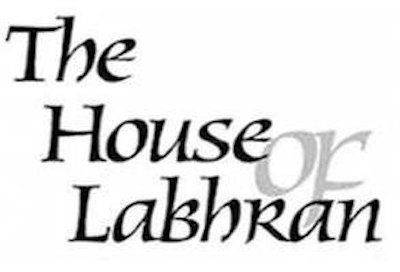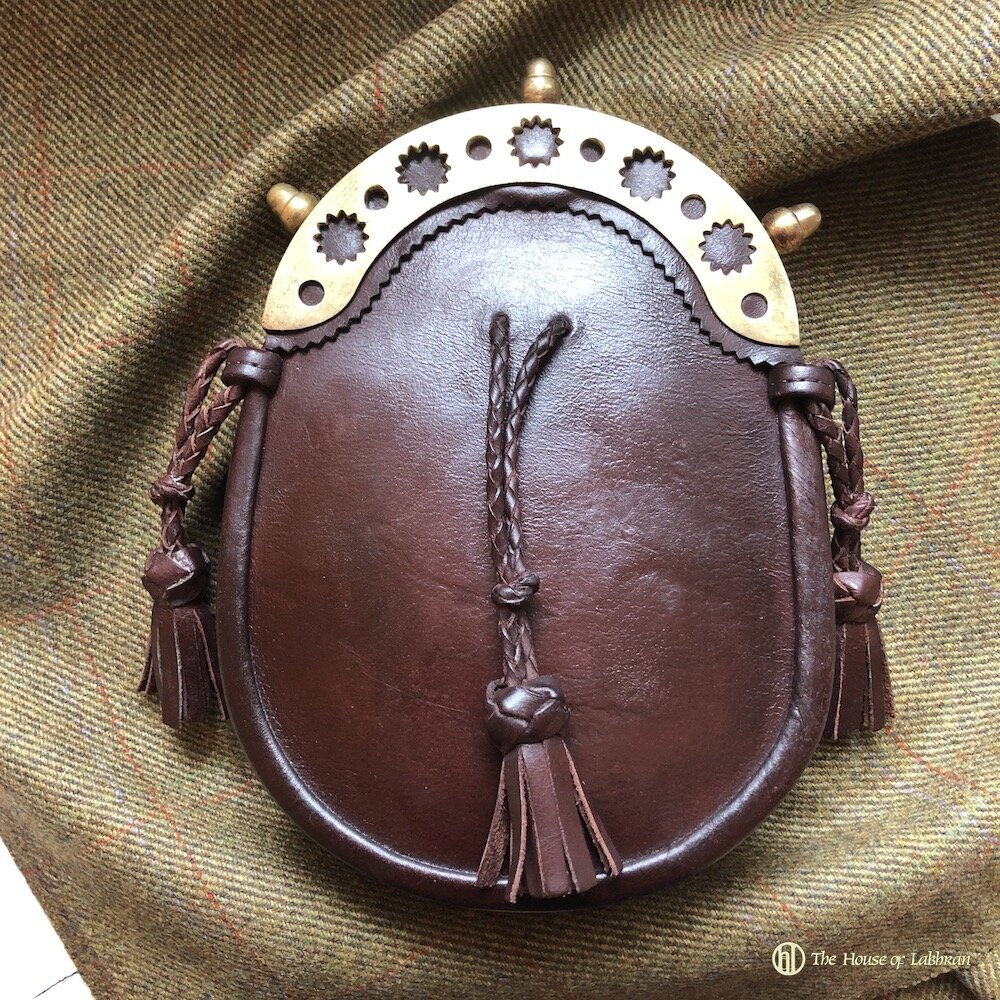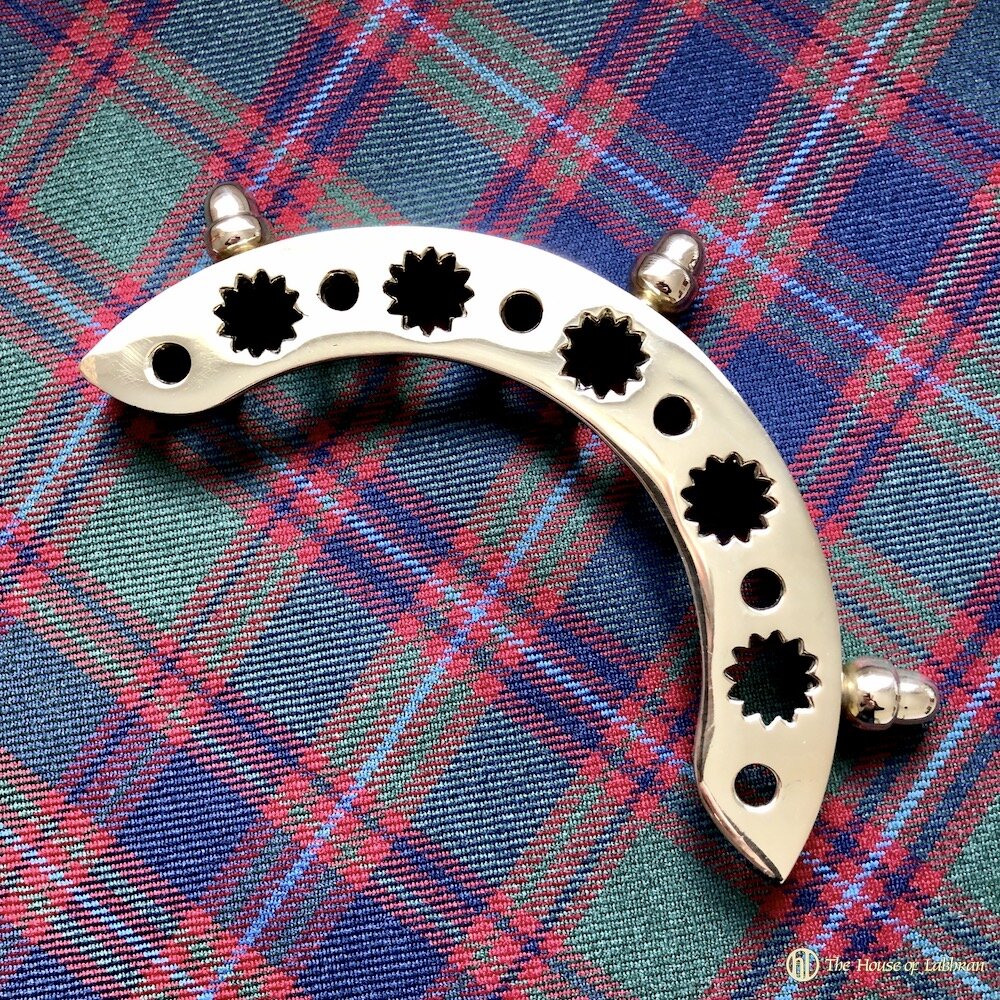Scottish Hand Aged Jacobite Style Brass Cantle Kintail Sporran - Limited Edition Sporran
Scottish Hand Aged Jacobite Style Brass Cantle Kintail Sporran - Limited Edition Sporran
The Five Sisters of Kintail
Scottish Hand Aged Jacobite Style Brass Cantle Kintail Sporran - Limited Edition sporran.
This hand crafted Victorian style sporran is based on an original vintage pattern. With solid brass cantle that had belonged to a member of the Atholl Highlanders. The solid brass cantle has been hand crafted by our House of Labhran regimental silversmith, as a House of Labhran Limited Edition of ten.
The antique pattern is said to be based on the Five Sisters of Kintail. The knobs on the cantle are in the form of brass acorns that have long been a Jacobite symbol. The hand crafted pouch is a fine chestnut coloured vegetable tan leather.
The hills to the north-east of Glen Shiel are known as the Five Sisters Of Kintail. Legend tells us the range of mountains called ‘The Five Sisters’ came into existence by the Grey Magician of Coire Dhunnid. The five sisters are the oldest of seven sisters, as the youngest two sisters fell in love with two Irish princes who washed ashore during a storm. Their father a local clan chief would only allow them to marry once the older sisters has also been married, and so the princes agreed to send their other five brothers once they had returned to Ireland with their new wives. Although the princes failed to appear, the five sisters continued to wait, eventually turning into mountains to extend their vigil into eternity. The five distinctly pointed summits ( Sgùrr na Ciste Duibhe, Sgùrr na Càrnach, Sgùrr Fhuaran, Sgùrr nan Saighead and Sgurr na Moraich ).
Kintail was held by the MacKenzie clan and was the ancestral land of the Clans MacRae and MacLennan; Affric was the land of Clan Chisholm. The battle cry of the Clan MacRae was ‘Sgurr Uaran’, after the central and highest peak of the Five Sisters of Kintail.
A large boulder lying on the steep southwest slopes of Sgùrr na Ciste Duibhe is known as "Prince Charlie's Stone", as it the place where Charles Edward Stuart spent a day in the summer of 1746 hiding from government troops. At the time he had a £30,000 bounty on his head after fleeing after the Battle of Culloden.





